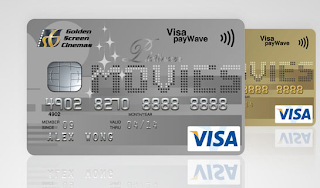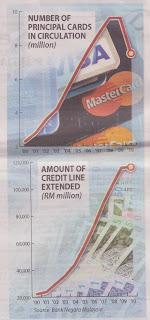Singaporeans love their credit cards.
According to the statistics provided by the Monetary Authority of Singapore (MAS), there were 9,721,768 credit cards and charge cards in circulation in Singapore in May 2015.
And there are 1.58 million credit card consumers - so that means a credit cardholder holds an average of 6 cards each.
That's nothing compared to Walter Cavanaugh of California, US, who holds the Guinness World Record for having the most credit cards - he had 1,497 credit cards in 2005, a record he held since 1971!
All his cards add up to a total credit line of $1.7 million dollars!
Ever wonder if there is a right number of credit cards you should have? How many are too many, and how many are too few?
We at GET.com have come up with a list of things you need to consider:
Does The Number Of Credit Cards I Have Affect My Credit Rating?
Before you are approved for a loan or mortgage by the bank, there are several factors that the bank will take into consideration before they lend you money. One of them is your credit score.
A credit score is a number used by banks as an indicator of how likely you will default on a debt. There are many factors that can affect your credit rating including - current and past credit history, annual income, spending habits, and how many other types of loans you currently have.
In Singapore, the score ranges from 1000 to 2000, with 2000 being the best, and 1000 the worst. While there isn't really much effect from having too many credit cards until you can't afford to pay your bills or keep rolling over your bill each month, banks like to see that you have established a responsible credit history without going overboard.
This means that if you have credit cards and pay them on time, that actually helps your credit score, compared to someone who doesn't have a credit card and thus has little or no credit history.
Although having more credit cards may not affect your credit score, late payments on your credit cards will.
More Credit Cards = More Rewards
Compared to other countries, credit card issuers in Singapore understand that having attractive rewards is what entices customers to sign up with them.
That means banks here offer a wide range of credit cards to cater to the different needs of consumers. There are cash back credit cards, travel credit cards, rewards credit cards, petrol credit cards, low-interest credit cards, and the list goes on.
Cash-conscious Singaporeans may prefer cash back credit cards, whereas people who like to travel may go for travel credit cards that give them travel-related perks.
Singaporeans who like freebies will like rewards credit cards that give you points for every dollar you spend on the card and you can later redeem those rewards points for shopping vouchers or merchandise.
Since you are going to spend the money anyway, using the best credit card helps to maximize the rewards you can get.
Depending on your lifestyle, it may be more worthwhile to focus on just a few credit cards and concentrate on the highest percentage of your expenditure on these cards.
Spreading your expenditures over more than 5 cards may end up reducing the number of rebates you earn since you spend less per card.
Managing Your Credit Cards
Whether you have one or a few credit cards in your wallet, you need to have a system in place that enables you to pay your credit card bills on time each month.
The best and simplest way of doing that is to set up a GIRO deduction of your card bills.
Simply fill up an interbank GIRO form to link up your bank account to your credit card account, and voila, your credit card bills will automatically be deducted from your bank account each month.
Of course, you should also make sure you have enough to repay your card bill each month. If not, you will incur interest charges, and that's not a good thing.
In a nutshell, additional credit cards will likely not hurt and they could even help your credit. How many is right for you really depends on how comfortable you are at handling and managing them.
Source:https://sg.finance.yahoo.com/news/many-credit-cards-enough-singaporeans-010102863.html
Source:https://sg.finance.yahoo.com/news/many-credit-cards-enough-singaporeans-010102863.html











